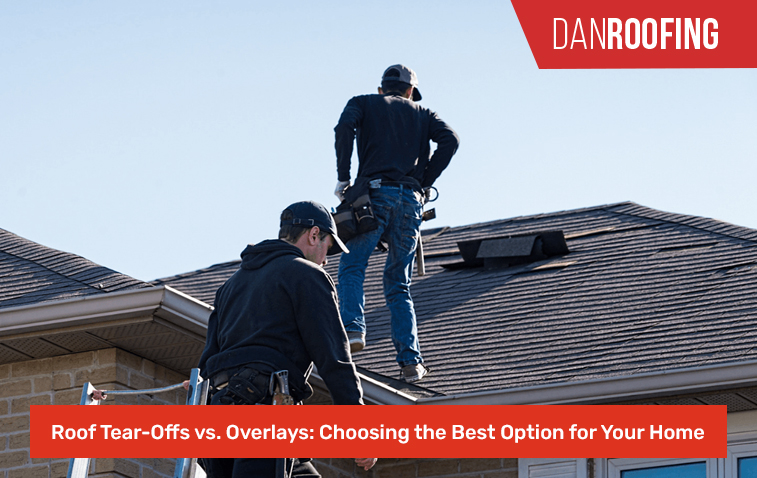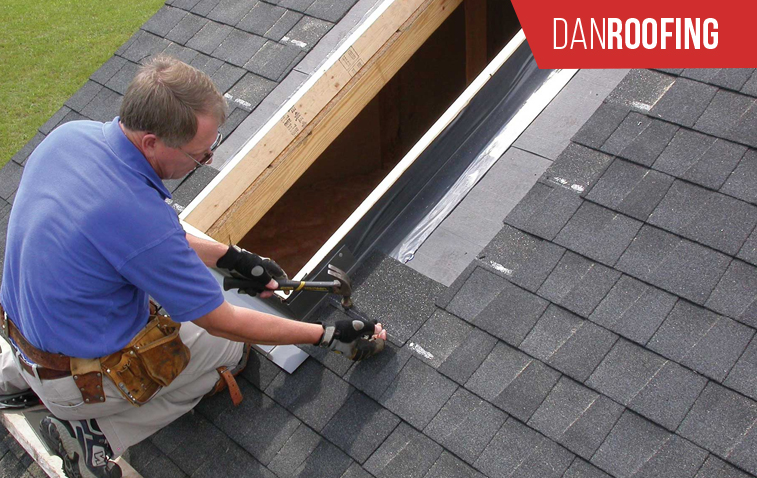The roof is one of the most important structures of any home, and over time it needs to be repaired or replaced. When your roof becomes old or worn, you have two major options – removing the roof completely and installing a new roof (tear-off) or adding another layer on top of the existing roof (overlay). Both options have their pros and cons, and choosing the right one can have a significant impact on the safety, durability, and long-term performance of the home.
Choosing the right option for roof renovation not only strengthens the structure of your home, but it also improves the home’s aesthetics and value. Both tear-off and overlay methods have their place, but it’s important to know which option is best for your home. This includes a number of factors such as the current condition of the roof, local weather, and your long-term goals. Let’s now take a deeper look at tear-off and overlay so you can make the right decision.

Roof tear-off is when the old roof is completely removed and replaced with a new roof. All layers of the roof are removed and new material is applied, which makes the roof look brand new and provides a strong base.
Tear-off has several significant advantages. The biggest advantage is that you get rid of your old and damaged roof, making the new roof a strong and long-term solution. This eliminates all problems in the roof structure such as moisture or cracks, and increases the lifespan of the roof.
However, tear-off also has some disadvantages. It takes more time and effort, as completely removing and re-installing the roof is a long process. Also, this process may take some time to work at home, which may hinder the normal functioning of the house.
Overlay is a process where a new roofing layer is added on top of the existing roof without removing it. It is a quick and simple process that requires less material and time. The main purpose of an overlay is to preserve the existing condition of the roof and give it a new, fresh layer.
Overlay has many advantages, especially if your roof is in good condition and only needs a fresh layer. Overlay is a quick and less complicated process that does not require a lot of work at home. It saves materials and time and gives the top surface of the roof a new shine.
But it also has some disadvantages. If your roof is already weak or has cracks, overlay can hide these problems but does not fix them. This can cause more problems in the long run. Another problem with overlay is that if your roof already has several layers, overlay can put more load on the roof.
Tear-off usually costs more than overlay, as it involves removing the old roof, cleaning up debris, and installing a new roof. In contrast, the overlay process takes less time and requires fewer materials, making it cost less.
In the long run, tear-off can prove to be a better investment as it ensures a longer roof life. Compared to overlay, tear-off requires less frequent repairs, saving on long-term maintenance costs. However, if your roof is in poor condition and you need a quick solution, overlay can be a less expensive option.
Tear-off and overlay have different effects on the roof lifespan. Tear-off is a process of installing a new roof, which increases the roof lifespan. It strengthens the roof structure and makes it durable for a long time. In contrast, an overlay is a temporary solution and does not fix the existing problems of the roof, which can reduce its lifespan.
Tear-off has more durability because it is a completely new roof. In contrast, the durability of an overlay depends on the condition of the existing roof. If the existing roof is already weak, the durability of an overlay may be less.
When you are planning to sell your home, the quality of the roof becomes important. A new roof installed after a tear-off can increase the value of the home, as it shows that the roof is completely new and durable.
In case of an overlay, potential buyers may think that the existing condition of the roof is being hidden, which may make them suspicious. So, if you are thinking of selling your home in the future, tear-off may be a more profitable option.
Tear-offs are suitable for almost all types of roofs, especially when the existing roof is in poor condition or has cracks. Overlays are suitable for roofs that are in good condition and only need a fresh layer.
For example, if your home has a water leak or a weakened roof, tear-offs would be the best option. On the other hand, if your roof is in good condition and only needs a new layer, overlays may be a more logical choice.
Local weather is important for roof renovations. In colder regions where there is snow and rain, tear-offs may be a better option, as it strengthens your roof structure. In warmer regions, where the sun shines more on the roof, overlays may be a quicker and less complicated option.
In different weather conditions, such as snowy areas where the roof is under heavy load, tear-offs can help protect the roof. In hot areas, overlays can help keep cool and protect the existing roof layer.
Local building codes and regulations determine how many layers can be placed on your roof. In many places, only one overlay layer is allowed. More layers than that are not allowed, and tear-offs may be required if your roof is already covered with two layers.
The new roof installed after a tear-off usually gets a longer warranty because it is brand new. In the case of an overlay, how long the warranty will be depends on the condition of the existing roof. The warranty difference also depends on how durable the new roofing material is.

Tear-off can have a higher environmental impact because it involves removing the old roof and using new materials. This process increases waste and increases demand for building materials.
Overlay has a lower environmental impact because it reuses the existing roof and requires less new material. If your existing roof is in good condition, overlay can be an environmentally friendly option because it generates less waste.
Both roof tear-off and overlay are important for the safety and durability of your home. Choosing the right option depends on your roof’s current condition, climate, and long-term goals. If your roof is weak or has problems, tear-off can be a strong and permanent option. On the other hand, if your roof is in good condition and you need a quick solution, overlay can be an easier and less expensive option.
Both options are good, but it depends on the current condition of your roof. If your roof is in poor condition, a tear-off would be better. If your roof is fine, an overlay may make more sense.
An overlay depends on the condition of the existing roof. If your roof is strong, an overlay may increase the lifespan of the roof. But if the roof has problems, an overlay will not provide a long-term solution.
Yes, a new roof after a tear-off usually has a longer warranty because it uses completely new materials, which leads to a better-quality roof.
An overlay has a lower environmental impact because it requires less material and reuses the existing roof, which generates less waste.